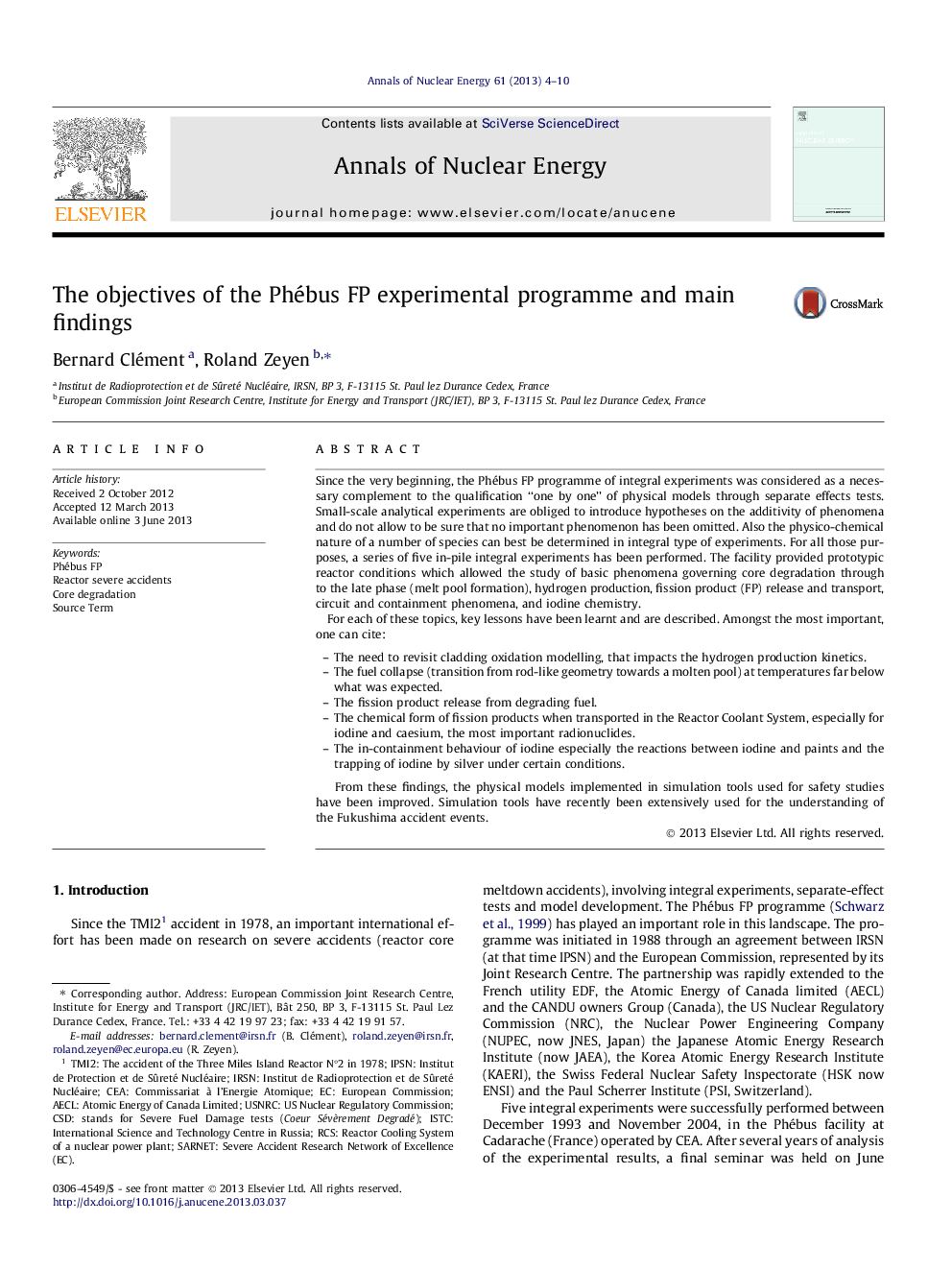| کد مقاله | کد نشریه | سال انتشار | مقاله انگلیسی | نسخه تمام متن |
|---|---|---|---|---|
| 1728453 | 1521137 | 2013 | 7 صفحه PDF | دانلود رایگان |

• Presentation of the objectives of Phébus FP programme of integral experiments.
• Key results on core degradation concern cladding oxidation and fuel relocation.
• Key findings on fission product concern release, transport, iodine chemistry.
Since the very beginning, the Phébus FP programme of integral experiments was considered as a necessary complement to the qualification “one by one” of physical models through separate effects tests. Small-scale analytical experiments are obliged to introduce hypotheses on the additivity of phenomena and do not allow to be sure that no important phenomenon has been omitted. Also the physico-chemical nature of a number of species can best be determined in integral type of experiments. For all those purposes, a series of five in-pile integral experiments has been performed. The facility provided prototypic reactor conditions which allowed the study of basic phenomena governing core degradation through to the late phase (melt pool formation), hydrogen production, fission product (FP) release and transport, circuit and containment phenomena, and iodine chemistry.For each of these topics, key lessons have been learnt and are described. Amongst the most important, one can cite:–The need to revisit cladding oxidation modelling, that impacts the hydrogen production kinetics.–The fuel collapse (transition from rod-like geometry towards a molten pool) at temperatures far below what was expected.–The fission product release from degrading fuel.–The chemical form of fission products when transported in the Reactor Coolant System, especially for iodine and caesium, the most important radionuclides.–The in-containment behaviour of iodine especially the reactions between iodine and paints and the trapping of iodine by silver under certain conditions.From these findings, the physical models implemented in simulation tools used for safety studies have been improved. Simulation tools have recently been extensively used for the understanding of the Fukushima accident events.
Journal: Annals of Nuclear Energy - Volume 61, November 2013, Pages 4–10